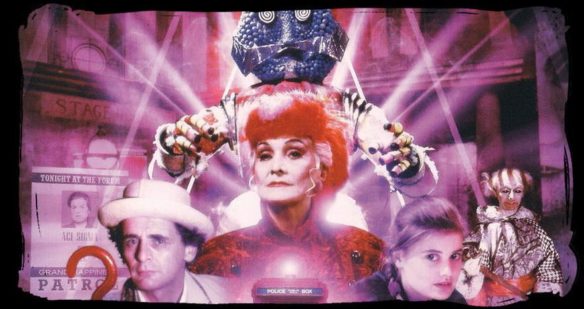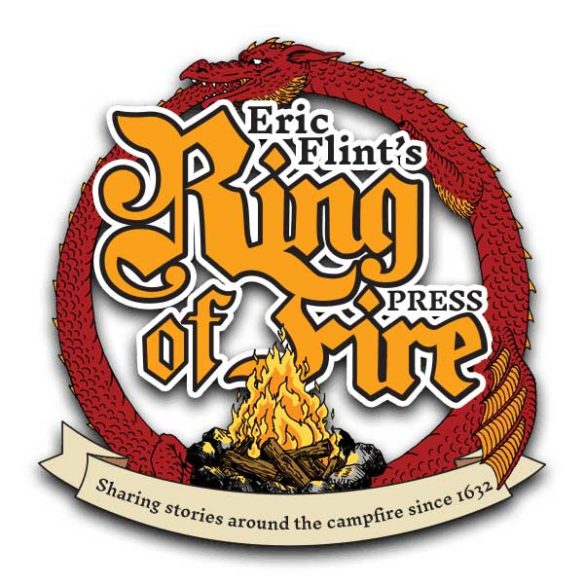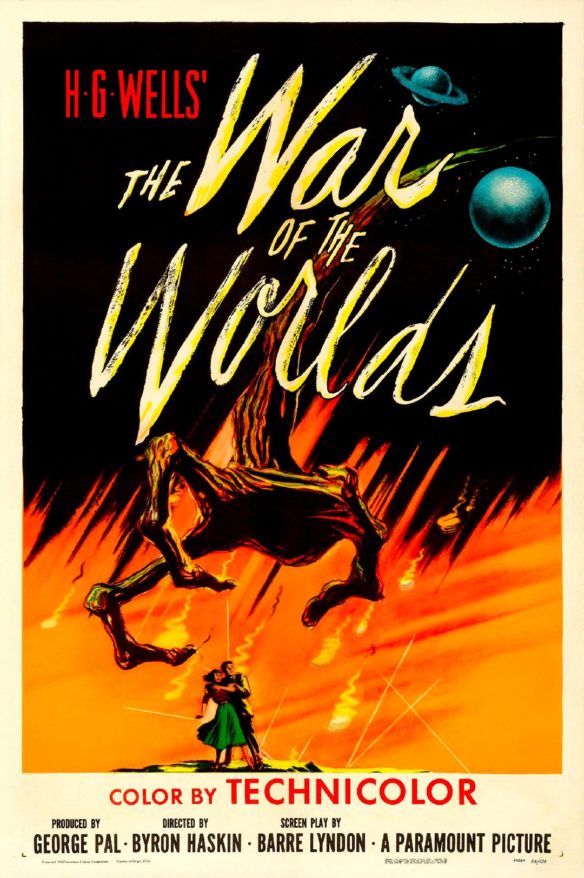(1) FOUR CENTURIES OF ANSIBLE. Congratulations to David Langford on publishing his four hundredth issue of Ansible. In addition to all the sff news in every issue, there’s always a grateful balance provided by departments like “Thog’s Masterclass.” One of the classic quotes from #400 is —
When Relativity Goes Bad. ‘The ship trembled, twisted, shuddered as full mass returned with the disruption of the field. Mass flooded back into the vessel, titanic mass, mass impossible to contain, it transformed into sheer energy, blasted through the nulgrav generator and poured from there into outer space.’ (Volsted Gridban, Planetoid Disposals Ltd., 1953) [BA]
(2) ZOOMING TO EURCON. Marcin Klak, Polish fan and past GUFF winner, has written up the virtual Eurocon: “Futuricon – The Future is Now”.
…There were a few interesting items to watch during Futuricon. I managed to visit some of them and a hmissed some others… The ones I was especially happy to attend were Alison’s Virtual GUFF Trip talk treating about this year’s GUFF delegate’s (Alison Scott) virtual foray to Australia and New Zealand. I was also fascinated by the great talk by Cheryl Morgan – Worldbuilding with Sex and Gender. It was a short introduction to how sex and gender look in nature. It was so interesting that I decided to buy one of the recommended books to read more about the topic.
(3) SLF GRANT OPENING. The Speculative Literature Foundation is accepting applications for the Working Class Writers Grant through December 31.
This grant is awarded annually to assist working class, blue-collar, poor, and homeless writers who have been historically underrepresented in speculative fiction, due to financial barriers. We are currently offering one $1000 working class grant annually, to be used as the writer determines will best assist his or her work. This year, we will accept applications October 1, 2020 through December 31 2020.

(4) LONG REACH. This English-language article from the German foreign broadcast service Deutsche Welle spotlights how the Chinese government is exerting pressure on foreign publishers: “Chinese censors target German publishers”. Tagline: “As China tries to expand its influence abroad, it’s going beyond politics and business to target literature and publishing. German publishers are among those that have been targeted by censors, as DW has learned.”
…When DW contacted Phoenix Juvenile and Children’s Publishing, the publisher in Nanjing which ordered the changes to Dragonfly Eyes, the employee who spoke with Frisch said the changes had been requested by the author.
But communication between the two publishers suggests a different story. In these messages, seen by DW, the Phoenix employee told the German publisher that “relevant departments” had given negative feedback on the book and that the issue was “sensitive.” She then reminded Frisch several times that she had to state publicly that the novel was a work of fiction, that it was “made up, not real.”
In the Chinese edition however, the author clearly writes in his foreword that the story was based on the memories of somebody he had met.
Later, the Phoenix employee told Frisch to stop all promotion of the book “in the interest of the author and the state.” She added that “because the story concerns the Cultural Revolution and because it is the anniversary year, you cannot not publish the book for the time being.”
This exchange took place at the end of October 2019, when the People’s Republic of China had just celebrated its 70th anniversary. By that point, the publisher’s tone had become slightly menacing. “Listen to our advice,” the employee said. “This will also protect the interest of your own publishing house.”
The licensing contract seen by DW does not mention any vetting of the final edition. “The deal is I get a text and I translate it,” Frisch said. “I don’t want to be used in political games.”…
(5) IMMOVABLE OBJECTIONS. Far Out explores “The reason why Stanis?aw Lem was furious about Andrei Tarkovsky’s adaptation of his novel ‘Solaris’”.
…Although Tarkovsky’s adaptation wasn’t the first (a 1968 television movie of Solaris by Boris Nuremburg), it is certainly the most famous and has been immortalised for its contribution towards a better understanding of the cinematic medium. More than the science fiction elements in the film, Tarkovsky was interested in the human problem. This fundamental difference between their respective approaches contributed to the dispute between Lem and Tarkovsky.
In October of 1969, Lem met Tarkovsky and literary expert Lazar Lazarev at the Peking Hotel in Moscow to discuss the script. Lem was not receptive to the changes that Tarkovsky had envisioned for his adaptation and could not understand why Lazarev was present. The writer maintained that his novel already had everything needed for a film, ignoring Tarkovsky’s efforts to convince Lem that he knew what he was doing as a filmmaker. When Lazarev asked if Lem would like to watch one of Tarkovsky’s films, the writer coldly answered: “I don’t have the time for that.”
However, the meeting was ultimately fruitful because Lem gave in and allowed them to go ahead with the project. The writer said that it was a matter of principle to not forbid anything but apart from that, he was openly against Tarkovsky’s vision. Insisting that he did not write the book about “people’s erotic problems in space”, Lem recalled the meeting between the two creative geniuses: “Tarkovsky and I had a healthy argument. I sat in Moscow for six weeks while we argued about how to make the movie, then I called him a ‘durak’ [‘idiot’ in Russian] and went home.”
(6) A FOOLISH CONSISTENCY IS THE HOBGOBLIN. “Little, Big: Talking with John Crowley” at Mythaxis Review.
DH: As someone who reads and watches are broad range of things, that resonates. Obviously, authors, film-makers, and other creatives have a similar freedom to experiment to see what works for them. However, the prevailing advice for achieving commercial success (at least as an author) is to pick a niche and stick to it. Do you have any advice for authors and filmmakers who want to succeed in multiple areas?
JC: I think the crux is how a writer – and his readers – define success. It certainly has long been the case in certain parts of the US literary world, and probably in that of other nations as well, that rapid production of new versions of successful books is the best way to high sales, and certainly most publishers are happy to facilitate that. But there’s a divide that ought to be noted: My most recent book was sent in MS to some twenty editors; some were entirely uninterested, but a small number thought the book was great. But because the publisher didn’t see profits from such an oddity it was refused, until at length one editor with a private label within a big house took it. If that’s the common route now, I would tell writers that they may as well write whatever they like, and make it entirely different every time, and trust that someone will take it even if it doesn’t match market expectations. (I’m quite sure that my last three or four novels, if read without my name attached, would not be recognized as by the same author.) About films I know less, though I’d guess the quandary – and the approach – would be similar.
(7) FLAME ON. From the inaugural virtual Ring of Fire Convention (ROFCON), a video of the panel on modern publishing featuring Alexi Vandenberg (M), Toni Weisskopf, Shahid Mahmud, Kevin Anderson, and Eric Flint.
(8) CONRAD OBIT. Roxanne Conrad (1962-2020), who published thriller, sff and YA under the name Rachel Caine, died of cancer on November 1 at the age of 57. More tribute from her husband and associates here.
Roxanne Conrad, aka Rachel Caine. Roxanne lost her fight with a rare and aggressive cancer, soft tissue sarcoma, on November 1, 2020.
Roxanne was known worldwide as thriller, science fiction, and young adult writer Rachel Caine. With over 56 books in print and millions of copies sold, she was a popular guest at conventions in the United States and around the world. Her popular book series include the young adult Morganville Vampires novels, the Great Library series, and the #1 bestselling Stillhouse Lake novels in adult thrillers.
(9) MEDIA ANNIVERSARY.
- November 2, 1988 — The first part of Doctor Who’s “The Happiness Patrol” aired. Written by Graeme Curry, it was intended (by him and the other writers) to be a parody of Thatcherism, with Helen A representing Margaret Thatcher herself. Starring Sylvester McCoy as the Seventh Doctor, Sophie Aldred as Ace and Shelia Hancock as Helen A. with David John Pope as Kandy Man. Rowan Williams, the Archbishop of Canterbury, referred to this story in his 2011 Easter sermon, on the subject of happiness and joy. Really. Truly.

(10) TODAY’S BIRTHDAYS.
[Compiled by Cat Eldridge and John Hertz.]
- Born November 2, 1913 — Burt Lancaster. Certainly being Dr. Paul Moreau on The Island of Doctor Moreau was his most genre-ish role but I like him as General James Mattoon Scott in Seven Days in May. And, of course, he’s really great as Moonlight Graham in Field of Dreams. (Died 1994.) (CE)
- Born November 2, 1927 — Steve Ditko. Illustrator who began his career working in the studio of Joe Simon and Jack Kirby during which he began his long association with Charlton Comics and which led to his creating the Captain Atom character. Did I mention DC absorbed that company as it did so many others? Now he’s best known as the artist and co-creator, with Stan Lee, of Spider-Man and Doctor Strange. For Charlton and also DC itself, including a complete redesign of Blue Beetle, and creating or co-creating The Question, The Creeper, Shade the Changing Man, and Hawk and Dove. He been inducted into the Jack Kirby Hall of Fame and into the Will Eisner Award Hall of Fame. (Died 2018.) (CE)
- Born November 2, 1928 – the Usual Don Fitch, 92. So he has long signed his name and referred to himself. But his usual is quite wonderful. Long-time helpful member of LASFS (L.A. Science Fantasy Society), earning its Evans-Freehafer service award in 1970. Fanzine From Sunday to Saturday in many apas, e.g. FAPA, SAPS, TAPS, The Cult, N’APA, ANZAPA, APA-L. Fan Guest of Honor at Minicon 28. [JH]
- Born November 2, 1941 – Ed Gorman. Three dozen novels, ten dozen shorter stories for us; comics; a dozen anthologies with Martin H. Greenberg; detective fiction (Life Achievement Award from Private Eye Writers of America), Westerns; nonfiction in NY Times, Redbook. Interviewed A.J. Budrys in SF Review. Fanzine Ciln. Won a short-story contest sponsored by Scribner’s, invited by an editor to expand into a mainstream novel, quit after six months saying “I was bored out of my mind.” (Died 2016) [JH]
- Born November 2, 1942 – Sue Francis, 78. Co-chaired DeepSouthCon 24 (with Ken Moore). With husband Steve Francis, mainstays of Rivercon for twenty-five years. Their reminiscence of NorthAmeriCon ’79 the 2nd NASFiC (N.Am. SF Con, since 1975 held when the Worldcon is overseas) here. Together Fan Guests of Honor at ConTact 6, Phoenixcon 5, MidSouthCon 10, DeepSouthCon 33, InConJunction XX, Con*Stellation XX; Rebel and Rubble Awards; DUFF (Down Under Fan Fund) delegates, report Sue & Steve’s Excellent Adventure in Australia; Big Heart (our highest service award). [JH]
- Born November 2, 1942 – Carol Resnick, 78. A founder of Windycon. Noted costumer and judge of our Masquerade costume competition. Widow of Mike Resnick, who throughout his pro career (4 Hugos, 1 Nebula; Galaxy’s Edge magazine) remained also a fan; together Fan Guests of Honor at Rivercon VI, Pro Guests of Honor at Contraption 5. [JH]
- Born November 2, 1942 — Stefanie Powers, 78. April Dancer, the lead in The Girl from U.N.C.L.E. which lasted just one season. Did you know Ian Fleming contributed concepts to this series and The Man from U.N.C.L.E. as well? She would play Shalon in the crossover that started on The Six-Million Man and concluded on The Six-Million Woman called “The Return of Bigfoot”. (CE)
- Born November 2, 1949 — Lois McMaster Bujold, 71. First, let’s note she’s won the Hugo Award for best novel four times, matching Robert A. Heinlein’s record, not counting his Retro Hugo. Quite impressive that. Bujold’s works largely comprises three separate book series: the Vorkosigan Saga, the Chalion series, and the Sharing Knife series. She joined the Central Ohio Science Fiction Society, and co-published with Lillian Stewart Carl StarDate, a Trek fanzine in which a story of hers appeared under the byline Lois McMaster. (CE)
- Born November 2, 1969 — Lucy Hawking, 51. Daughter of Stephen Hawking. Children’s novelist and science educator. With her father, she wrote the George’s Secret Key series which may or may not be genre. Anyone here from Britain who’s actually seen them? (CE)
- Born November 2, 1972 – Masayoshi Yasugi, 48. (Personal name last, Japanese style.) Japanese SF New Face Award for The Dreaming Cat Sleeps in Space (2003); three more novels, a dozen shorter stories. [JH]
- Born November 2, 1983 – Ádám Gerencsér, 37. Edits Sci Phi Journal (with Mariano Martin Rodríguez), two short stories there. “When … I wanted to read a comprehensive guide to Hungarian alternate history and realised that it didn’t exist, I wrote one (in English, Journal Hélice vol. III no. 6).” [JH]
(11) COMICS SECTION.
- The Far Side visits the beach as two figures pass each other with the day’s catch.
(12) DRACULA FOR ALL THE SENSES. Print Magazine admires the work done by Beehive Press in “Designing the Ultimate Dracula Experience”. This amazing collection will be out next year. Many photos at the link.
Last year, Philadelphia-based boutique publisher Beehive Books launched a Kickstarter to bring literary lovers an interactive Dracula experience like never before: “You are not a passive observer. You are a scholar exploring this supernatural archive.” When it’s released in 2021, Dracula: The Evidence will deliver a briefcase full of letter correspondence, photographs, diaries, newspaper clippings, phonograph records and more, that make the saga of the centuries-old vampire more real than ever.
… When the finished project is delivered, readers will be able to unfold a map of London and track the characters as they move through the story. Letters and photographs will give them a chance to become “supernatural archeologists.” Blueprints and additional maps will turn them into amateur detectives.
All told, from the aged briefcase that holds all of the documents to the beautifully bound journals and framed photos, the planned design is downright dazzling.

(13) HEAR ME. STEAL ME. “Star Wars: The Mandalorian Created A New Form Of Sign Language For The Tusken Raiders” – let SYFY Wire fill you in.
For many moons, Star Wars fans have written off the Tusken Raiders as savage Sand People that bray like donkeys whenever they go on the offensive. Thanks to The Mandalorian, acolytes of the galaxy far, far away can now view Tatooine’s desert nomads in a new light. In Season 1, the bounty hunter known as Din Djarin (Pedro Pascal) proved that one can actually make physical contact with the Tuskens and live to tell the tale. The Season 2 premiere took that dynamic to an entirely new level as Djarin forged a shaky alliance between the Sand People and the citizens of Mos Pelgo.
But before the show could have its titular hero communicating with the indigenous folk of Tatooine, it needed a new language through which they could speak to one another. That’s where Troy Kotsur came in; the deaf actor was hired to come up with a sign-based vocabulary for the Tusken Raiders and it wasn’t just a matter of bringing American Sign Language to the Great Dune Sea.
(14) TOWERS OF BABEL. In the Washington Post, Christian Davenport says what NASA engineers are worried about the software in the giant Space Launch System rocket, since the rocket has parts made by Lockheed Martin, Aerojet Rocketdyne, Northrop Grumman, and the United Launch Alliance and it’s not clear if the software can integrate equipment made by these different companies: “NASA’s new rocket would be the most powerful ever. But it’s the software that has some officials worried.”
… Computing power has become as critical to rockets as the brute force that lifts them out of Earth’s atmosphere, especially rockets like the SLS, which is really an amalgamation of parts built by a variety of manufacturers: Boeing builds the rocket’s “core stage,” the main part of the vehicle. Lockheed Martin builds the Orion spacecraft. Aerojet Rocketdyne and Northrop Grumman are responsible for the RS-25 engines and the side boosters, respectively. And the United Launch Alliance handles the upper stage.
All of those components need to work together for a mission to be successful. But NASA’s Aerospace Safety Advisory Panel (ASAP) recently said it was concerned about the disjointed way the complicated system was being developed and tested.
At an ASAP meeting last month, Paul Hill, a member of the panel and a former flight and mission operations director at the agency, said the “panel has great concern about the end-to-end integrated test capability and plans, especially for flight software.”
(15) KITTY LITERATURE. The Guardian interviews a philosopher about his latest study: “John Gray: ‘What can we learn from cats? Don’t live in an imagined future’.
…One impulse for this book was a conversation with a fellow philosopher, who assured Gray that he “had taught his cat to be vegan”. (Gray had only one question: “Did the cat ever go out?” It did.) When he informed another philosopher that he was writing about what we can learn from cats, that man replied: “But cats have no history.” “And,” Gray wondered, “is that necessarily a disadvantage?”
Elsewhere, Gray has written how Ludwig Wittgenstein once observed “if lions could talk we would not understand”, to which the zookeeper John Aspinall responded: “He hasn’t spent long enough with lions.” If cats could talk, I ask Gray, do you think we would understand?
“Well, the book is in some ways an experiment in that respect,” he says. “Of course, it’s not a scientific inquiry. But if you live with a cat very closely for a long time – and it takes a long time, because they’re slow to trust, slow to really enter into communication with you – then you can probably imagine how they might philosophise.”
Gray believes that humans turned to philosophy principally out of anxiety, looking for some tranquillity in a chaotic and frightening world, telling themselves stories that might provide the illusion of calm. Cats, he suggests, wouldn’t recognise that need because they naturally revert to equilibrium whenever they’re not hungry or threatened. If cats were to give advice, it would be for their own amusement.
(16) AND I SWEAR THAT IT’S ALL TRUE. A whale of a tale.
(17) WARP DEED. “Tenacious D” covers the “Time Warp.” Vocals by Jack Black and Kyle Gass. Cameo appearances by Eric Andre, Ezra Miller, George Takei, Ilana Glazer, Jamie Lee Curtis, John Heilemann, John Waters, Karen O, King Princess, Mayor Pete Buttigieg, Michael Peña, Peaches, Phoebe Bridgers, Reggie Watts, Sarah Silverman, Senator Elizabeth Warren, and Susan Sarandon.
It’s astounding… time is fleeting… and the 2020 election is here. Time to ROCK-Y THE VOTE! And remember: it’s just a jump to the LEFT, and not a step to the right!

(18) VIDEO OF THE DAY. In “Twilight Breaking Dawn Pitch Meeting” at Screen Rant, Ryan George summarizes both the fourth and fifth Twilight movies in one meeting because, unlike the last Harry Potter meeting, there really isn’t enough plot in the last Twilight novel for two movies.
[Thanks to Rob Thornton, Mike Kennedy, Andrew Porter, Danny Sichel, James Davis Nicoll, Michael Toman, John King Tarpinian, JJ, John A Arkansawyer, Cora Buhlert, Cat Eldridge, John Hertz, and Martin Morse Wooster for some of these stories. Title credit goes to File 770 contributing editor of the day Daniel Dern.]




